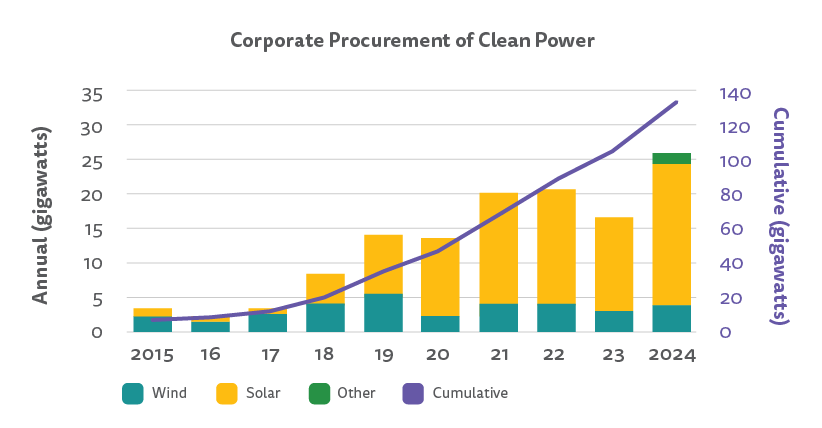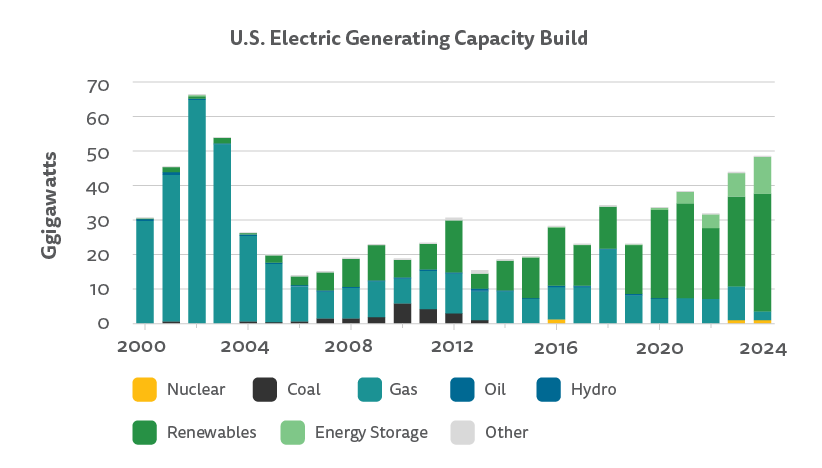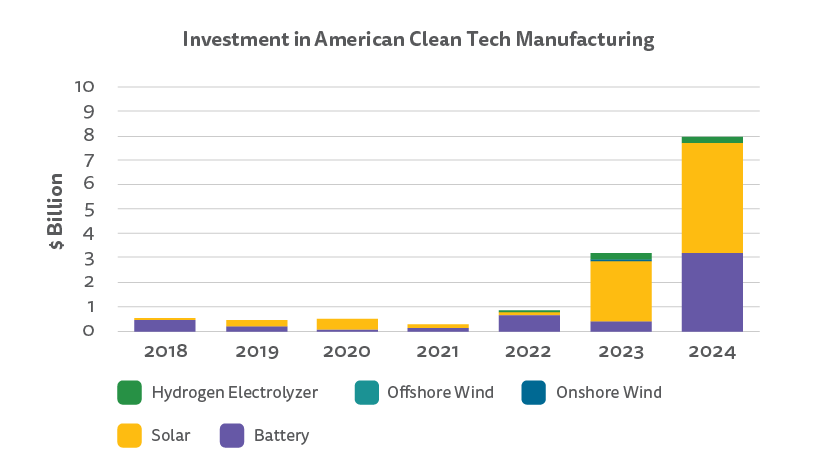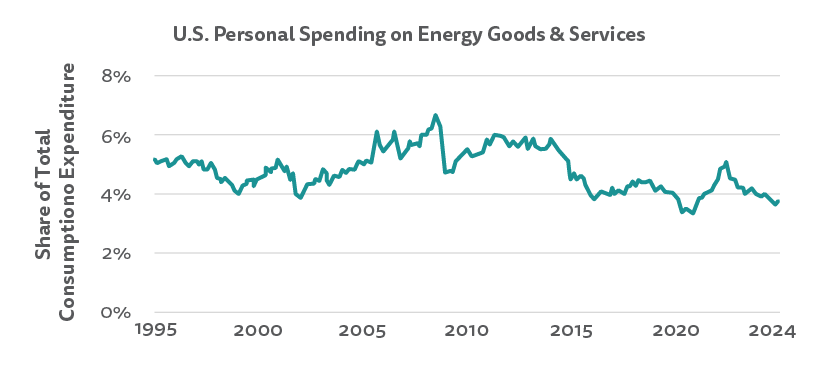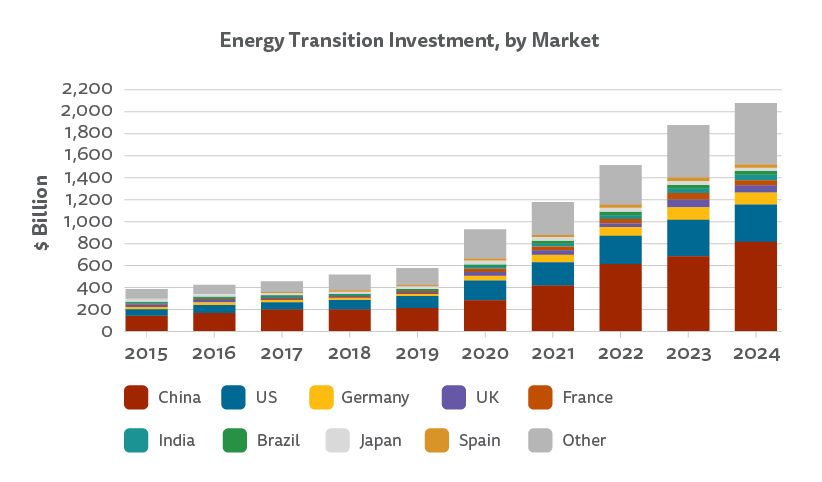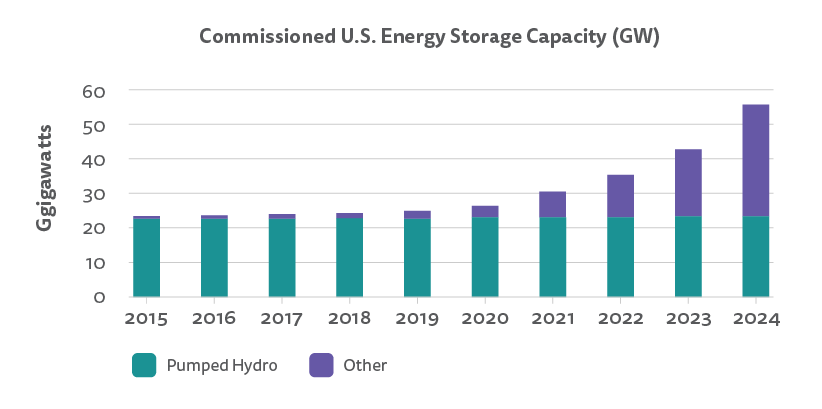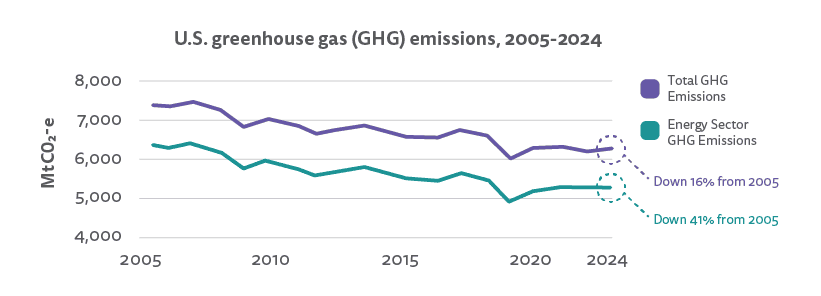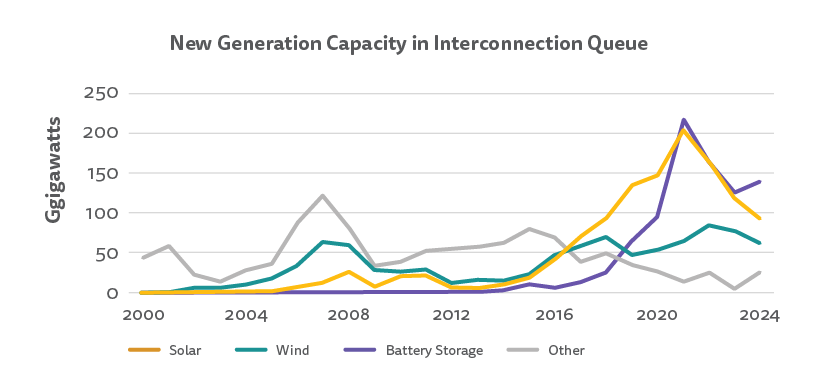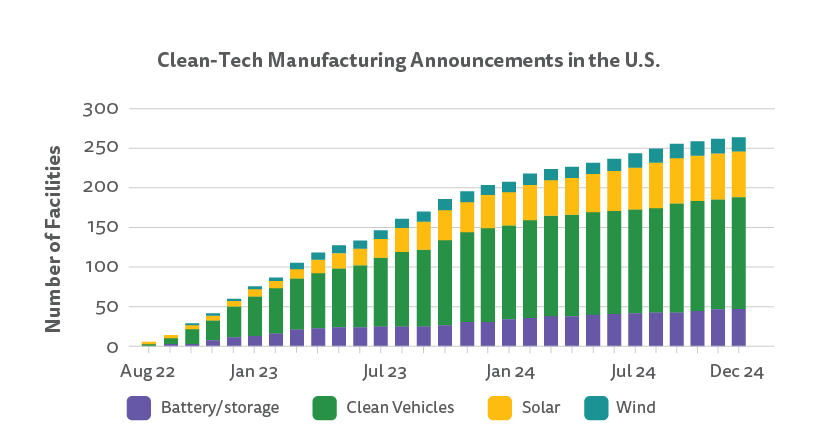Sustainable Energy in America 2025 Factbook
Tracking Market & Policy Trends
The Sustainable Energy in America Factbook provides valuable year-over-year data and insights on the American energy transformation.
Six Takeaways from the 2025 Factbook
Year after year, the Factbook has demonstrated that energy efficiency, natural gas, and renewable energy are the growth sectors of the U.S. energy economy. Here are BCSE’s top takeaways from the 2025 Factbook:
Learn more and download the 2025 Factbook here:
American Sustainable Energy Technologies Are Ready to Meet Increasing Energy Demand
1
The United States is on the cusp of a new era of energy expansion. Energy demand, energy productivity, and the U.S. economy all grew in 2024.
The economy is expanding, and U.S. energy productivity is increasing alongside it.
- In 2024, the U.S. economy expanded 2.8 percent, while primary energy consumption grew 0.5 percent year on year, resulting in a 2.3 percent increase in U.S. energy productivity.
- Energy productivity – a measure of economic output per unit of energy consumed in the United States – is an essential metric to grade our country’s competitiveness in the global market.
- Over the past 10 years, U.S. energy productivity has increased 29 percent.
Market forces are driving demand.
- Corporate procurement of renewable energy set a record in 2024, contracting 28 gigawatts (GW), up 34 percent from 20.9 GW in 2022. Tech companies spearheaded this growth, accounting for 84 percent of overall deal activity.
- Industry accounted for 33 percent of U.S. energy consumption in 2024, which has risen 5 percent over the past decade.
- New trends impacting demand include the onshoring of manufacturing, electrification of end-use applications, and increased data center demand for artificial intelligence.
2
BCSE’s diversified, sustainable energy portfolio is ready to meet this increasing demand.
Natural gas and renewables provide two thirds of U.S. power.
- Natural gas remained the largest electricity generation source, representing 43 percent of total output in 2024.
- Renewable energy’s share grew to 24 percent. The contribution of wind, solar, biomass, waste-to-energy, geothermal, and hydropower rose at the fastest pace among all sources of energy consumed across the economy, rising 10.2 percent year on year.
- Together, natural gas and renewables provided 67 percent of U.S. electricity in 2024, up from 47 percent just a decade ago.
- Zero-emission sources – renewables and nuclear – provided 42 percent of all U.S. power.
- In 2024, generation from coal dropped 4.4 percent year on year. In the past decade, coal-fired generation has seen a steady decline from 33 percent to 15 percent of the U.S. power mix.
Solar, storage, and wind power comprised the bulk of the new capacity build.
- 48.4 GW of new utility-scale power generation and storage capacity was commissioned in 2024 – the highest total since 2003.
- Wind and solar accounted for 71 percent of this expansion, at 34.4 GW.
- Natural gas capacity additions totaled 2.4 GW.
- 1.1 GW of nuclear capacity was added to the grid.
3
By deploying these homegrown sustainable energy solutions, the United States is building a competitive and secure national economy.
Sustainable energy investments are bringing manufacturing – and jobs – back to America.
- In 2024, $8 billion was invested across supply chain segments for the hydrogen electrolyzer, wind, solar and battery sectors.
- Additionally, 2024 saw 60 new cleantech manufacturing announcements across four sector supply chains, bringing total announcements to 264 since August 2022.
- Jobs in sustainable energy grew 4.2 percent in 2023, more than twice the rate of the overall economy. More than 3 million Americans are part of today’s sustainable energy workforce.
The proportion of U.S. personal spending on energy is near historic lows.
- While regional differences in retail prices remain large, U.S. consumer spending on energy – including natural gas, electricity and motor fuel – as a share of total personal expenditures fell 0.3 percentage points in 2024 to 3.8 percent.
4
With continued investment in sustainable energy, the United States is poised to lead the world in technology and innovation.
Global investment in sustainable energy once again shattered records, soaring to over $2 trillion.
- The United States deployed $338 billion in financing for energy technologies, including renewable energy, EVs, and power grid investment, up from $303 billion in 2023, a 0.8 percent increase year on year. China continued to lead the global market, with $818 billion of investment in 2024, a 20 percent increase year on year.
The United States is the second largest energy storage market in the world after China.
- The United States commissioned a record 11.9 GW of battery storage capacity in 2024.
- Pumped hydropower energy storage remains the largest source of storage currently available on the U.S. power grid in terms of storage capacity.
5
These investments are more urgent than ever, as extreme weather events intensified in 2024 and U.S. greenhouse gas emissions increased.
The United States continues to face extreme weather events that threaten energy reliability.
- In 2024, the country experienced 27 climate-related disasters, the second highest number of such events since 2010. The total cost associated with these events nearly doubled, reaching $182.7 billion.
U.S. economy-wide greenhouse gas emissions rose slightly in 2024, increasing 0.5 percent year on year.
- Transport remained the largest emitting sector of the U.S. economy in 2024. This was followed by industry, which is the fastest growing source of emissions, accounting for 89 percent of the 2024 increase. Power sector emissions remained stable.
- As of 2024, the United States has reduced its economy-wide emissions 15.8 percent below 2005 levels, and power sector emissions have dropped 41 percent.
6
As we move forward, the progress of sustainable energy in America faces obstacles – which can be overcome with federal policy support.
U.S. energy infrastructure needs reform of regulatory timelines and processes, to accelerate the pace of U.S. energy expansion and meet rising demand.
- In 2024 alone, 317 GW of new capacity applied to interconnect in the seven U.S. independent system operators, representing nearly a third of the current installed U.S. power system. Over two-thirds of this new capacity is solar and storage.
- Federal permitting and siting processes cause bottlenecks and leave projects stranded in development for far too long. On federal lands, it can take roughly four years to construct utility-scale wind and solar projects, seven to ten years to obtain a mining permit, and ten years to build a new transmission line.
- Additionally, carbon capture and storage project plans are increasing, with 146 million tons per annum (Mtpa) of new plants in the U.S. pipeline, against an installed base of 23 Mtpa. Here, permitting challenges are slowing deployment.
Maintaining the U.S. federal government’s energy sector investments and energy tax credits will enable forward momentum to continue.
- Durable energy tax policies improve American competitiveness. Existing tax credits benefit a broad range of technologies, including biofuels, biomass, carbon capture and storage, combined heat and power, energy efficiency, fuel cells, hydrogen, hydropower, natural gas, nuclear, solar, waste-to-energy, and wind power technologies, among others.
- In 2024, 60 new clean tech manufacturing sites were announced, increasing the total to 264 since August 2022, when federal energy tax credits kickstarted private investment in homegrown energy.
- Businesses like predictability. Changing existing energy tax policy would put good-paying American jobs and competitiveness at risk.


